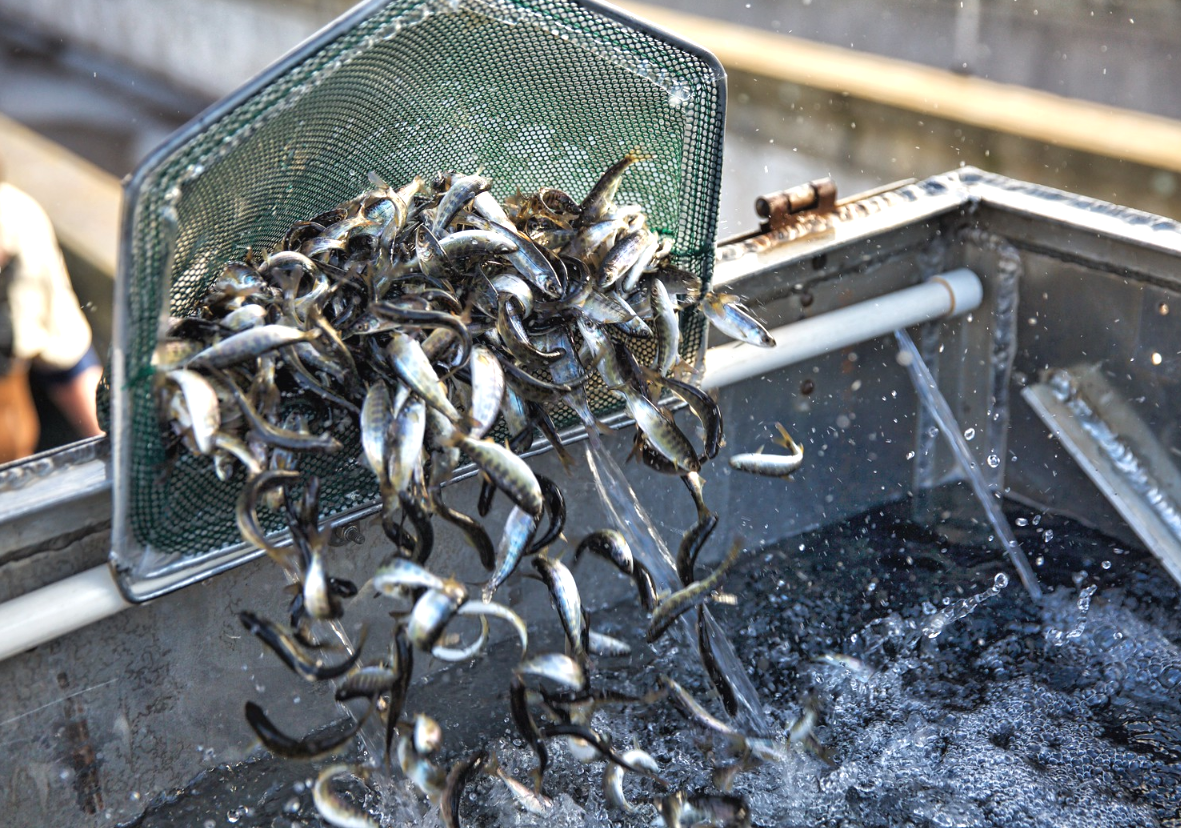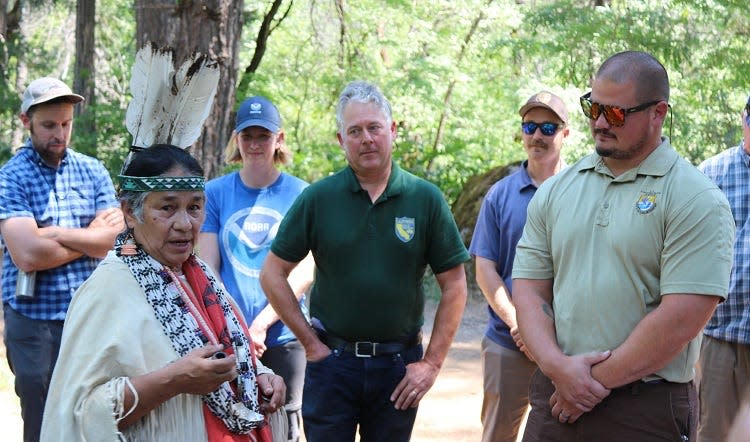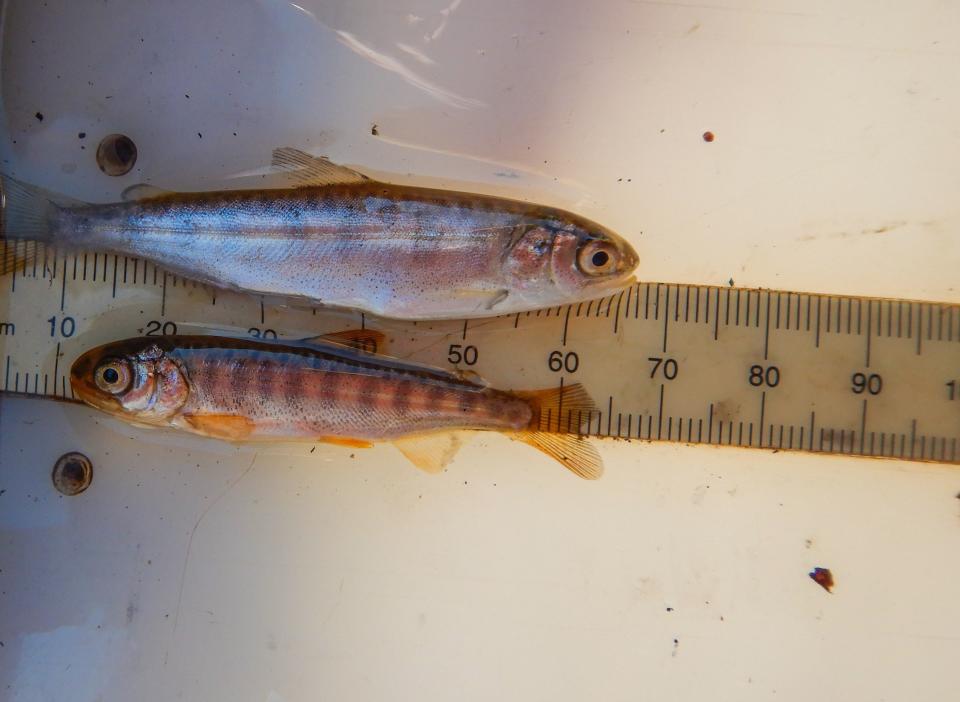Sacramento River winter-run salmon face worst year ever

Salmon that spawn in the Sacramento River in the Redding area are enduring the lowest survival rate on record this year.
About 149,000 young winter-run chinook salmon have made it from Redding to Red Bluff this year on their annual trek to the Pacific Ocean, according to data from the University of Washington’s School of Aquatic and Fishery Sciences.
In an average year, about 1.3 million of the winter-run salmon would be counted near the former Red Bluff Diversion Dam.
This is the second-straight year the number of winter-run salmon migrating down the Sacramento River to the ocean has been very low, according to the National Oceanic and Atmospheric Administration.
Last year, only 557,652 young salmon got as far as Red Bluff. But in 2021 warm water from Shasta and Keswick dams was cited as mostly to blame for the lower numbers of fish.
How things got this bad for the salmon
In years past, drought and warm water in the Sacramento River has been blamed for high winter-run salmon deaths.
But this year, a thiamine deficiency and other diet issues in adult females returning from the ocean to spawn was blamed for the lower numbers of juveniles, according to NOAA.
“Last year, because temperatures took such an enormous toll, the thiamine was secondary to that. But this year, because we actually did really well on temperatures the thiamine really hammered the juvenile fish,” said Michael Milstein, a spokesman for NOAA.
A lower number of adult winter-run salmon returning to spawn has also contributed to the problem, Milstein said.
Earlier this year, fisheries officials predicted that warmer waters in the Sacramento River would kill up to 80% of the young fish before they got to Red Bluff, Milstein said. But it turned out that an estimated 17% of the fish died from warmer temperatures, he said.
The winter-run salmon – one of four salmon runs in the river – evolved to survive best in cold water because they once spawned in streams above Shasta and Keswick dams.
The winter-run is listed as an endangered species and state fish and wildlife officials consider the fish “greatly imperiled.”
After the dams were constructed in the 1940s and 50s, the winter-run could no longer reach their ancestral spawning grounds, so they now spawn in the Sacramento River in the Redding area.
Water cutbacks helped keep the river cold
The U.S. Bureau of Reclamation, which operates the dams tries to manage the water in Shasta Lake so the cold water deep in the lake is available for the winter-run in the summer.
The water in the lake is also used for drinking and irrigation across the state, from Redding to Southern California. Because of the ongoing drought, the bureau reduced water allotments 82% to senior water rights holders such as the city of Redding and the Anderson-Cottonwood Irrigation District.
Related:Here's how California's laws force some Redding residents to pay more for drinking water
Junior water rights holders this year received just the bare minimum for health and safety for drinking water.
Don Bader, the bureau’s area manager, said the agency was able to preserve the cold water pool in lake for the winter-run this year because of the water reductions to irrigators and municipalities. Because of that, lake levels have remained higher this year than in 2021, he said.
Exploding anchovy population blamed
While the cold water problem was partially alleviated this year, the thiamine problem worsened, Milstein said.
After the young salmon leave the river, they spend two to three years in the ocean before returning to the stream where they were hatched. After spawning, the adults die.
The thiamine problem in the young fish is due to an explosion that began in 2015 in the number of anchovies in the ocean off the coast of California, said Andrew Thompson, a fisheries biologist with the Southwest Fisheries Science Center in La Jolla.
Because anchovies are so numerous, the salmon are eating too many of them and not enough of the other foods they typically feed on, such as krill and young rockfish, said Rachel Johnson, a research fisheries biologist and leader of the salmon life history team at the Southwest Fisheries Science Center in Santa Cruz.
“What we are seeing is that the moms aren't getting enough vitamin B1, or thiamine, to be able to pass that along for their babies’ development,” Johnson said.
The adult salmon are getting a “triple whammy” from eating too many anchovies, she said.
To begin with, the anchovies don’t have a lot of thiamine in their systems that the females can pass on to young salmon eggs.
Anchovies also have an enzyme in them that breaks down thiamine. And finally, anchovies are high in lipids that strip away vitamin B1 from animals that eat them, she said.
Consequently, after the eggs hatch in the river, the young fish are thiamine deficient and they don’t develop properly, making them easier prey to other fish and animals in the river.
To counter the problem, many adult female winter-run chinook returning from the ocean are captured at Keswick Dam and taken to the Livingston Stone Fish Hatchery near Shasta Dam.
At the hatchery, eggs are harvested from the females. But they are also given a thiamine boost to alleviate the deficiency, Johnson said.

Salmon re-introduced into the McCloud River
Another program fisheries officials are trying, in order to boost winter-run numbers, is to plant them at a very early age in the McCloud River above Lake Shasta.
Johnson said the results of the project, which began last summer, are promising.
Related:Here's the latest on how Redding's Sundial Bridge affects endangered salmon
The cold water conditions in the McCloud and the available food in the river seemed to help the young fish get bigger than hatchery raised salmon, she said.
“So when we saw these fish coming up from the McCloud that were much larger than these hatchery fish, it was pretty exciting because we'd hoped that after putting these animals up in their ancestral habitat the fish would have greater productivity, and growth is one really key clue into how that habitat is for this fish,” Johnson said.
After the young fish get old enough to begin swimming downstream from near the Ah-Di-Na Campground in the McCloud River, they are trapped, trucked and released into the Sacramento River near the Sundial Bridge in Redding.

As of the end of November, just over 1,600 young winter-run salmon had been trucked from the McCloud to the Sacramento River, according to the California Department of Fish and Wildlife.
Milstein said adult winter-run salmon are also being introduced into Battle Creek so the fish aren't solely dependent on spawning in the Sacramento River.
This article originally appeared on Redding Record Searchlight: Sacramento River winter-run salmon face worst year ever

